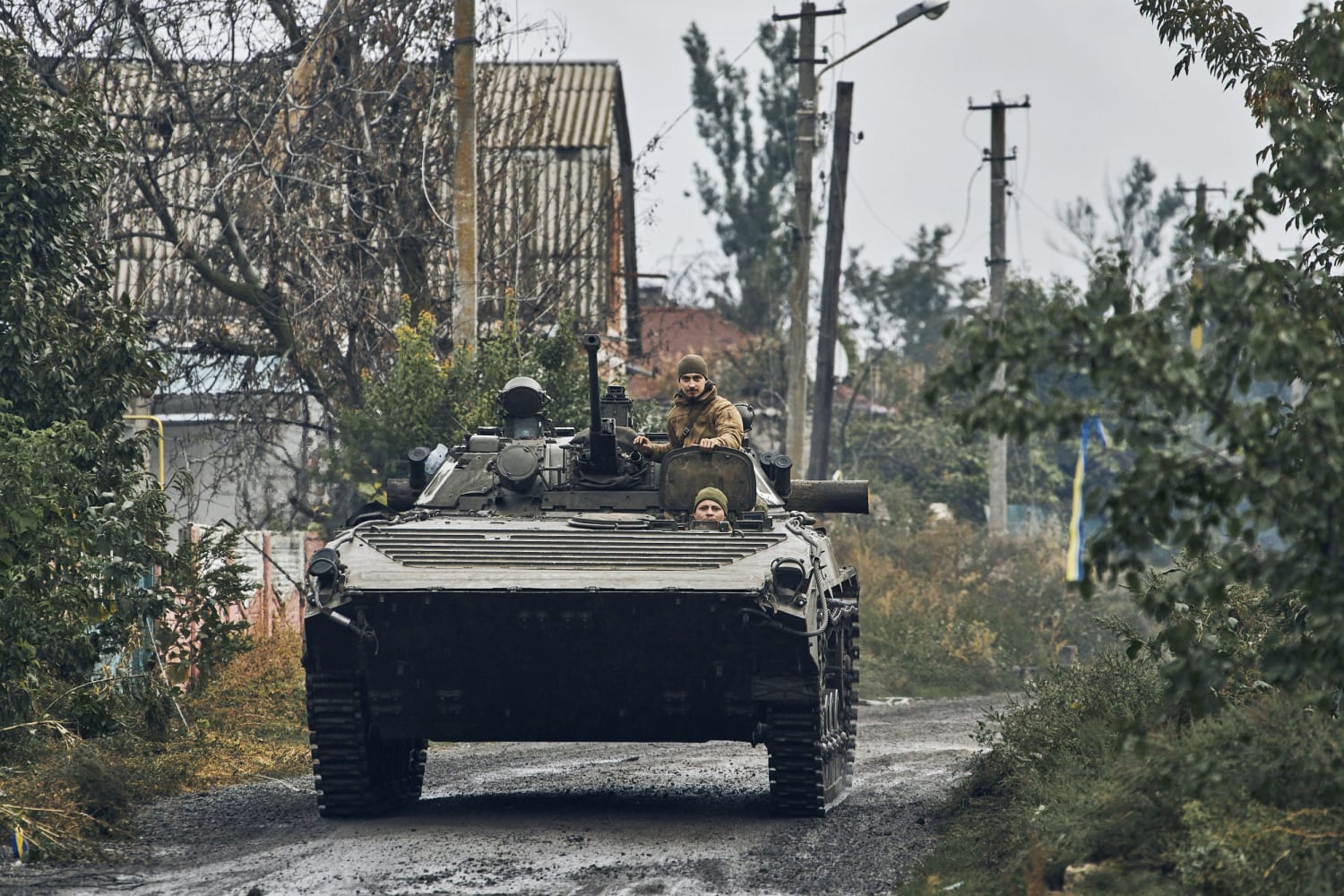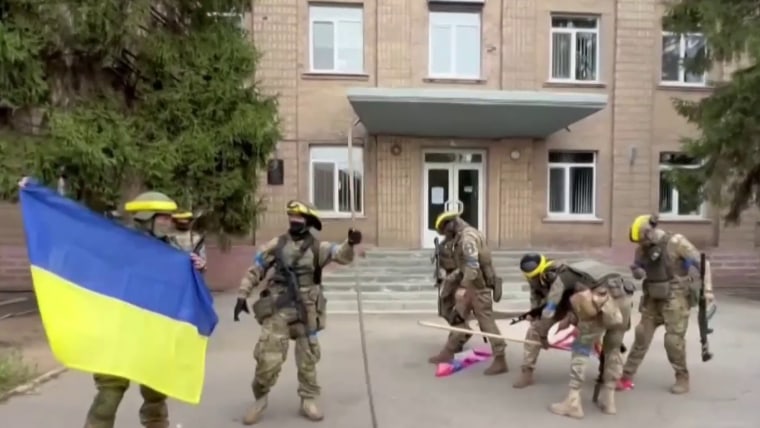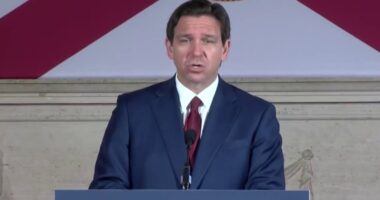Over the past week, a surprise offensive by Ukraine in northeastern Kharkiv province liberated more territory in six days than Russia captured in months of slow-paced warfare this summer. The advance, spearheaded by tanks and motorized infantry, was the sort of fast-paced mobile warfare that Russia tried and mostly failed to pull off in the first month of its invasion of Ukraine.
It was also an effective deception operation. Kyiv had loudly touted plans to counterattack in southern Ukraine’s Kherson province, and it did actually initiate that campaign on Aug. 29. But all the while, Ukraine’s military quietly mustered a second force of elite brigades in Kharkiv province in the east, even as Russia was pulling its best troops out of the region to prepare for the Kherson attack.
Even Ukraine’s chief military commander frankly explained in an article a week ago that the country’s current military planning extends into 2023.
That meant once Russian defenses in Kharkiv were overrun, the Kremlin had no substantial local reserves to break the counteroffensive’s momentum. Now pro-Russian military bloggers even fear that Ukraine has quietly husbanded a third counteroffensive force aimed at cutting President Vladimir Putin’s coastal land corridor to Crimea and Kherson in the south.
Whether Ukraine is about to do so or not, the fact that this is a realistic concern shows just how thoroughly the Ukrainian military has seized the initiative and how, after having been severely underestimated by Russia (and many Americans), its capabilities are increasingly rattling even ardent Russian nationalists.
These gains have given new fire to Kyiv’s insistence that it intends not just to roll back Russia’s conquests since it invaded in February, but also to retake areas in the eastern Donbas region that Russia or Russian-backed separatists seized when fighting erupted in 2014 and that were used as a springboard for the 2022 invasion. While such a victory seemed highly unlikely at the beginning of the summer, it now seems more possible. But it’s just that, a possibility, and no one should think these recent successes mean Russia will be conceding any time soon.
Putin continues to show no interest in real negotiations, and his inner circle still insists that the overthrow of Ukraine’s government is its ultimate objective. Even Ukraine’s chief military commander frankly explained in an article a week ago that the country’s current military planning extends into 2023.
Many analysts believe Russian forces are too exhausted and depleted to resume major offensive operations soon, so this fall Ukraine will likely try to press its advantage before winter weather slows the pace of operations and buys time for Russia to rebuild its badly mauled ground forces. But Kyiv will have to strike a difficult balance between pushing its battle-weary forces as far as possible to exploit the panic among Russian troops and consolidating its position to avoid overextension and exposing its own exhausted forces to a counterattack.
The winter could also provide Moscow with opportunities to cut down Western military support. In retaliation for sanctions the European Union has imposed on Russia’s energy sector, Moscow has accelerated restrictions on fuel going to Europe and no doubt hopes that the coming cold weather will cause shortages and skyrocketing bills while people need to heat their homes. Russian gas has already declined from 40% to roughly 15% of the E.U.’s total consumption, and the Kremlin hopes further reductions could compel European states to come begging for reduced prices in return for lifting economic sanctions and decreasing military aid to Ukraine.
It’s also possible the Republican Party could recapture the U.S. House and even the Senate in the midterm elections in early November. While some in the GOP have supported military aid to Ukraine, a significant contingent on the Trumpian right is inclined to follow the former president in objecting to such support and could more effectively obstruct U.S. aid packages if it gains power. Moreover, a worsening economy could make sustained military largesse for Ukraine harder for Democrats to back, as well.
Western aid visibly played an important role in the offensive of the past week. Long-distance strikes by rockets on HIMARS trucks, informed by intelligence provided by Western allies, helped destroy Russian ammunition depots and logistical hubs in advance of the attack. Ukrainian troops advanced rapidly, using Humvees, armored personnel carriers and tactical trucks donated by the U.S., the United Kingdom, the Netherlands and Australia. They were supported by tanks donated by Czechia and Poland and artillery and anti-aircraft vehicles given by Germany. Western-supplied missiles designed to destroy air-defense radars, shoot down low-flying aircraft and sink ships have also substantially mitigated Russia’s edge in air and sea power.
Such continued support is essential for Ukraine’s ability to defeat Russia. At present it most needs armored vehicles, artillery and shells; in the long run it needs to replace its old Soviet warplanes with Western ones and adopt longer-range ground-based air defenses. If there is a drop-off in Western military assistance, Putin may believe he is better off prolonging the war until aid is exhausted, while Russia’s larger economy can make back losses faster than Ukraine’s.
Some of Ukraine’s strategy, as well, could extend the timeline to allow the country to capitalize on certain opportunities. While Ukraine’s counteroffensive in Kherson has made some progress, it has gone more slowly than the rapid gains in the east because of the heavier concentration of Russian forces. An optimal strategy would give time for Russian defenses to corrode from within and collapse, as Ukraine has repeatedly knocked out the bridges these forces depend upon for resupply and reinforcement. An overly rushed assault risks heavy casualties and more destruction of Kherson itself.
Though Ukraine should press any and all advantage rather than concede ground to Putin, places where it does succeed more quickly could also cause Russia to double down on the fight. The forces that liberated Kharkiv province are now positioned to take back the symbolically important cities of Sievierodonetsk and Lysychansk or advance on the key supply hub of Starobilsk, aided by Russia’s withdrawal from key cities before Ukrainian forces even get there.
That raises the prospect that Kyiv might try to roll deeply into Luhansk province and capture cities controlled by Russia since 2014-15. This would be especially humiliating for Putin and remove the minimal gains that would provide him a face-saving victory, which could cause him to dig in even more.
But in the end, ensuring Ukraine can continue taking back its territory is the most likely way to convince Putin that a negotiated exit is preferable to more war — which he could otherwise sustain indefinitely to avoid the appearance of defeat.
Ukraine’s Kharkiv campaign reflected operational excellence, not mere competence.
To that end, Ukraine has shown it can effectively use Western assistance and advice to liberate its territory and execute deft maneuvers like smartly targeting a weakly defended rail junction at Kupyansk, near Kharkiv, that served as the only direct railway link from Russia’s border with northern Ukraine, vital to Russian forces in Kharkiv province because of Moscow’s reliance on trains for moving troops and supplies.
Cutting that primary artery compelled the retreat of much more powerful Russian forces in Izium that risked being surrounded and having supplies of ammunition and fuel reduced to trickles. The same concern weighed on Russian troops throughout the rest of the Kharkiv region — including in locations that hadn’t been directly pressured.
Even supporters of assistance to Ukraine have long harbored concerns that Ukraine’s military lacked the proficiency to switch from primarily defensive warfare to large-scale offense coordinating infantry, tanks and artillery and their supporting logistics. But Ukraine’s Kharkiv campaign reflected operational excellence, not mere competence.
Kyiv’s allies should keep on providing support to dissuade Russia from continuing to seek a military victory. That should include long-term investments in Ukraine’s defenses to leave Putin in no doubt that trying to outwait Western assistance is a losing game. Such long-term investment is needed because even if the progress of the last week means Ukraine has turned the tide, there’s still a very long journey to shore.
Source: | This article originally belongs to Nbcnews.com











